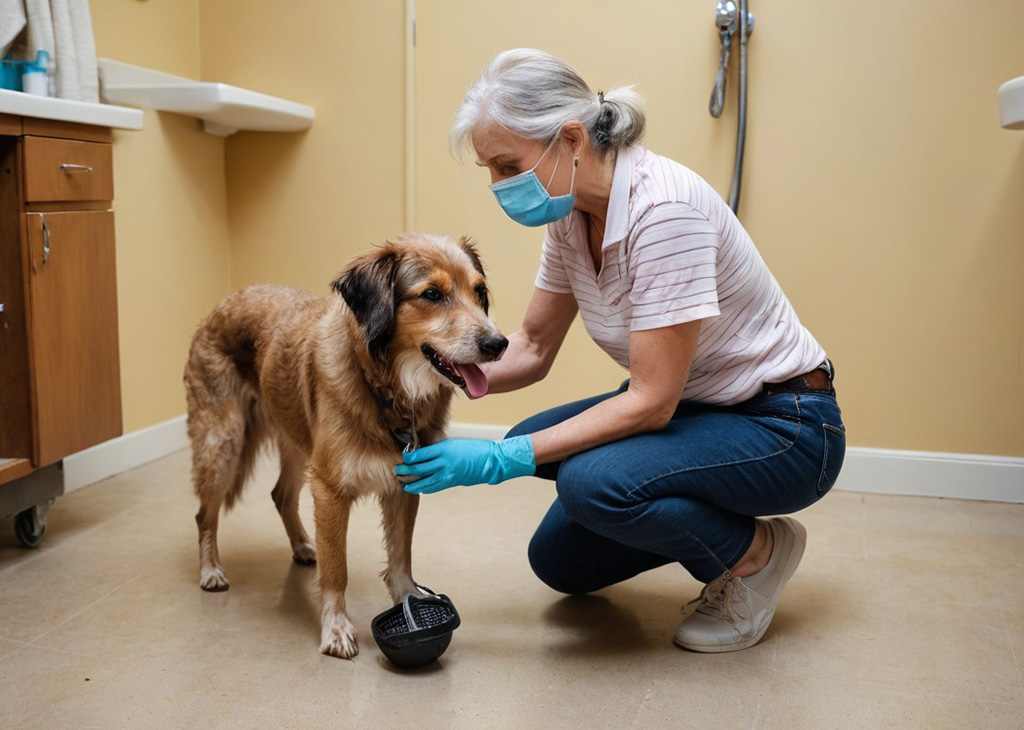Pet Retirement Homes: Who's Looking After Our Senior Fur Babies?
Imagine your scraggly, ancient dog scuffing around the house or your silver-chinned cat more snoozing than purring. He's been your little partner in crime forever, but now he's slowing down — a bit creaky, a bit forgetful. You're balancing work, bills, maybe children — who has time to be full-time nurse to a senior pet? And it does seem as a growing number of people in retirement are reaching this conclusion, and it's a trend I find interesting. So let's dig into this quirky take on eldercare, including what's driving it, whether it's here to stay and some surprises along the way.

The Pet Boom — and Their Longer Lives
First of all: There are pets all over the U.S. There's an entire industry dedicated to them: 66 percent of households — about 87 million — have a furry friend, according to the American Pet Products Association's 2023-2024 survey. 65 million homes have dogs, and 46 million families have cats. That's a lot of wagging tails and whisker kisses! But here's the outrageous fact: our pets are living longer. Forty years ago, the average life span of a dog was 10.5 years, compared with 11.8 years today. Cats? They've been in the 15 or more range — some indoor kitties have zoomed past 20. Better veterinary care and high-end kibble play a part, but growing age brings more senior pets with creaky joints, diabetes or heart trouble. All of a sudden, your companion needs more than a scratch behind the ears — and that's where pet retirement homes come in.
What, Exactly, Is a Pet Retirement Home?
Think of it as a luxury retirement home, but for pets. These establishments began popping up around 2020, an evolution from luxury boarding situations. The pandemic fuelled a pet craze — adoptions shot up 20 percent — but once people went back into the grind, they found their fluffy companions weren't so spry anymore. Regular kennels wouldn't do for pets that needed 24-hour TLC. That's where venues like “Pet Hospice LA” out in California, and the “Silver Streak Pet Retirement Home” in New York, can be found, created for the geriatric dog with wobbly legs or milky eyes. The U.S. pet services market is estimated to be $7.8 billion in 2023, according to IBISWorld, and pet retirement is the fastest growing segment at 7.5 percent annual clip — compared with 4 percent for standard boarding. People are not just indulging pets — they are making a final commitment.
Why Now? It's All About Us
So why's this blowing up? Blame it on North America's aging vibe. —In 2023, according to the U.S. Census, 17.3% of Americans—57 million—were 65 or older. Many of these folks are empty-nesters, turning to pets for companionship. But let's be real — walking a dog at 70 isn't the same as when you were 50, and vet visits? Exhausting. Pet retirement homes provide that lifeline, calming seniors' minds and keeping their pets comfortable. Category No. 2: “The younger crowd — millennials and Gen Z represent 60% of pet owners (APPA),” he says. Another friend in New York, a 30-something coder, spent $2,000 on kidney medications for his 15-year-old cat and is planning a retirement home “because she deserves it after all these years.” These generations are spending for pet happiness, and that's spurring the trend.
The Cash and the Catch
Here's the money part: There are no cheap pet retirement homes — and they don't hide it. “Silver Streak” even costs $800-$1,200 a month for basics — and without meds or therapy you're over $2,000. Someone could keep 20 pets in a house and end up pulling in $48,000 a month, more than half a million a year, plus ancillary revenue streams like pet massages or custom chow. North America's pet care market is projected to be worth $275 billion by 2030 according to Euromonitor, and pet retirement will take 5–7% of that and mark it a cool $10–$15 billion Who's footing the bill? Owners who see pets as kids. A YouGov poll conducted in 2024 indicated that 73% of respondents viewed their pets as family, 56% would pay more than $1,000 for care and 12% would spend $5,000. X posts show this: “My 16-year-old mutt's wobbly, but I'd give up steak to get him a good spot.”
But hang on — it's not all paw-some. That $1,000 monthly tab? Brutal for the average Joe. U.S. households in 2023 earned a median income of $74,000 — after that, rent and groceries and pet splurges get squeezed. No, these homes are concentrated in big cities like LA and NYC — small-town America is still out of luck. Xers whine: “Retirement for pets? That's sweet, but I have two jobs — I can't even retire myself!” It's a fair shot — will this then be a high-class lure for the rich?
Global VibesJapan, Europe Keep It Moving
Japan's ahead of the curve. And with 15 million of them resisting them, pets outnumber children under 15 (Japan Pet Industry Association, 2022) in pet-crazy cities like Tokyo. Places such as “Pet Nursing Home Anela” offer 24-hour supervision, vet-assisted rehabilitation, even passing cuddles — certified “aging with dignity,” for dogs and cats. It has inspired a mini-industry: pet wheelchairs, senior chow. Europe has at least a piece of the action, too — in Germany, “Tierpension Alt & Jung” is charging $60 a pop for physical therapy and spa days. Pricey? Sure. But demand is off the charts.

The Human Element: Pets Are People, Too
This is much more a shift in mind set than a business. An ailing old pet would have been put down or abandoned. Now? We're paying for their golden years. A Japan scholar dubs it “Pet Humanization” — we're treating them like we do us. I've read New York Times stories in the U.S. about owners writing “pet wills” to set down retirement home placements — crazy, but also adorable. “Ten years from now, perhaps pet retirement homes will be as common as human ones — every household has at least one aging furball, after all,” someone speculated on X. Turn to Euromonitor for support: Global spending on pets could top $500 billion by 2030 and North America is leading the way.
What's Next? Big Dreams, Big Hurdles
Will pet retirement homes be successful? It's a toss-up. The demand is there — older pets, older owners, pet-obsessed young people (sorry, young people!). are a hydra with three heads of growth. But expense and coverage are speedbumps — scaling this out of urban hot spots is harder.” America has its own flavor, too — sprawling, all-in deals like a 20-acre Texas pet utopia with ponds and live-streamed pooch paddles ($1,500/month). Japan's land-contiguous, Europe's land-hungry and land-poor—the U.S. could go big, literally, and renature.
Your Takeaway—and a Question
Pet retirement homes aren't just a trend — they're a mirror. It shows how we're rethinking life, loyalty and even aging. Sure, it tears wallets apart, but for those old friends who have been with us, isn't it worth it? I'm curious—what about you? Got an old pet? Would you serve them a home away from home? Leave your thoughts in the comments—let's chew on this together!
